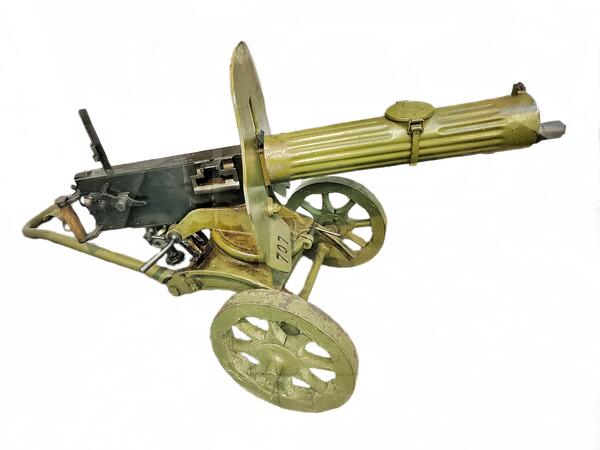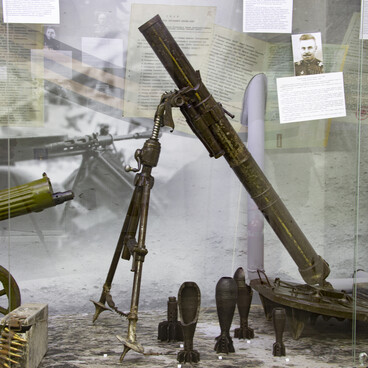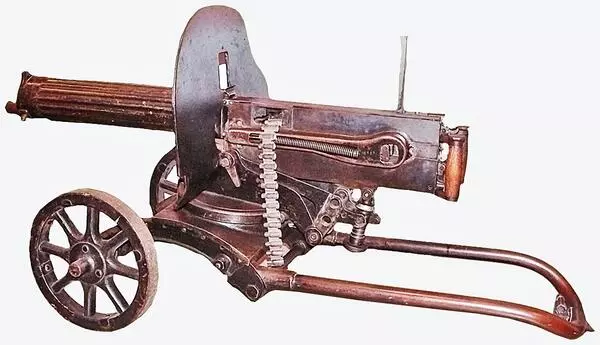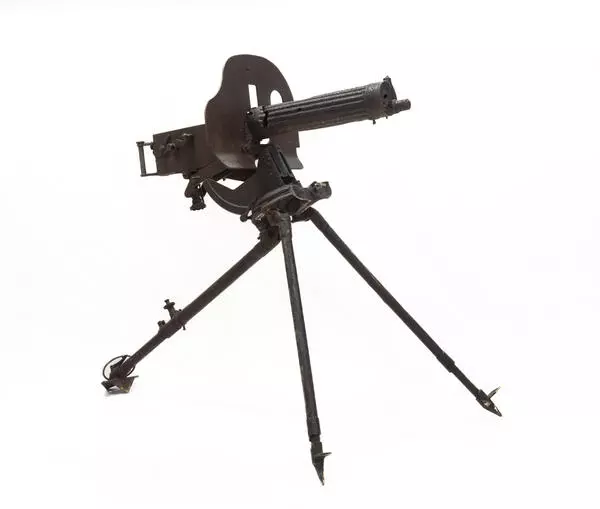The Maxim machine gun was named after its inventor — Sir Hiram Stevens Maxim (February 5, 1840 — November 24, 1916). Since childhood, he was interested in engineering, especially in turnery. Although he did not get any university education, he became an extremely talented engineer with the help of self-education and perseverance.
Hiram Maxim invented the first automatic fire sprinkler, a new type of mousetrap, an inhaler for treating asthma, an improved electric generator, and an incandescent electric lamp, and even tried to create a steam-powered aircraft. However, his most significant invention is the world’s first automatic machine gun.
The machine gun was patented in 1883. It was based on some revolutionary technology, including bolt locking, a short recoil, and a belt feed (with the use of canvas belts). Hiram Maxim himself brought the invention to the Russian Empire in 1887. Even Emperor Alexander III tried the machine gun, which, after testing, was put into service.
At first, it was manufactured by the “Vickers, Sons and Maxim” company and used the 10.67 mm Berdan cartridge. After 1891, it was transformed to use the 7.62 mm Mosin cartridge. In March 1904, the Russian Empire bought out a manufacturing patent for the Imperial Tula Arms Plant. Such machine guns were first used in combat by Russian troops during the suppression of the Boxer Uprising in China and began to be used widely during the Russo-Japanese War.
During World War I, Maxim machine guns were used by all the participants. Initially, the Russian troops were equipped with even more such guns than other armies. However, eventually, the Russian Empire was unable to meet the needs of the front for machine guns and cartridges and provide them in the required quantity.
During the Russian Civil War, these machine guns were also used by all the participants of the conflict. One of the symbols of those years was the “tachanka” — a vehicle with leaf springs for transporting a Maxim machine gun. By 1930, Soviet engineers recognized that the machine gun was obsolete and decided to design more advanced guns. However, this process slowed down due to the beginning of the Great Patriotic War. This weapon was last used in action by the Soviet army in 1969, during the border clash with the Chinese troops of Mao Zedong on Damansky Island.
Hiram Maxim invented the first automatic fire sprinkler, a new type of mousetrap, an inhaler for treating asthma, an improved electric generator, and an incandescent electric lamp, and even tried to create a steam-powered aircraft. However, his most significant invention is the world’s first automatic machine gun.
The machine gun was patented in 1883. It was based on some revolutionary technology, including bolt locking, a short recoil, and a belt feed (with the use of canvas belts). Hiram Maxim himself brought the invention to the Russian Empire in 1887. Even Emperor Alexander III tried the machine gun, which, after testing, was put into service.
At first, it was manufactured by the “Vickers, Sons and Maxim” company and used the 10.67 mm Berdan cartridge. After 1891, it was transformed to use the 7.62 mm Mosin cartridge. In March 1904, the Russian Empire bought out a manufacturing patent for the Imperial Tula Arms Plant. Such machine guns were first used in combat by Russian troops during the suppression of the Boxer Uprising in China and began to be used widely during the Russo-Japanese War.
During World War I, Maxim machine guns were used by all the participants. Initially, the Russian troops were equipped with even more such guns than other armies. However, eventually, the Russian Empire was unable to meet the needs of the front for machine guns and cartridges and provide them in the required quantity.
During the Russian Civil War, these machine guns were also used by all the participants of the conflict. One of the symbols of those years was the “tachanka” — a vehicle with leaf springs for transporting a Maxim machine gun. By 1930, Soviet engineers recognized that the machine gun was obsolete and decided to design more advanced guns. However, this process slowed down due to the beginning of the Great Patriotic War. This weapon was last used in action by the Soviet army in 1969, during the border clash with the Chinese troops of Mao Zedong on Damansky Island.





